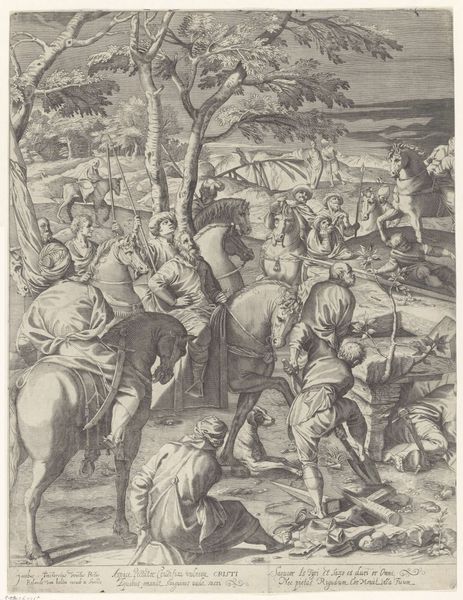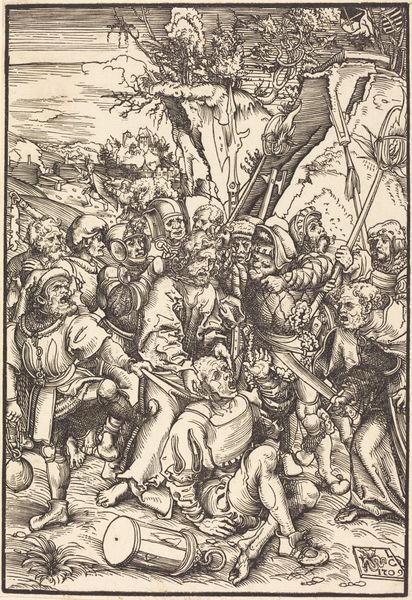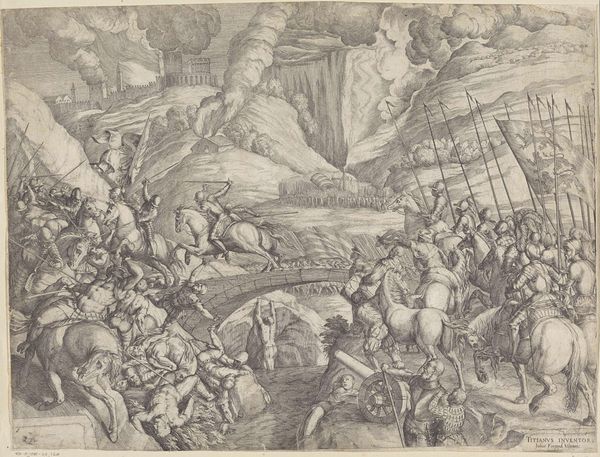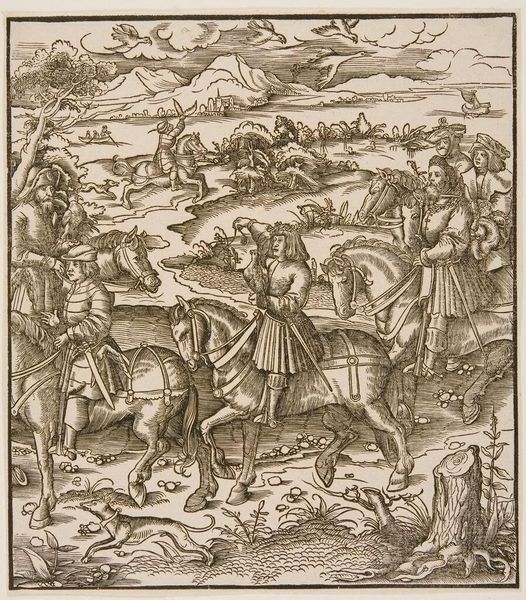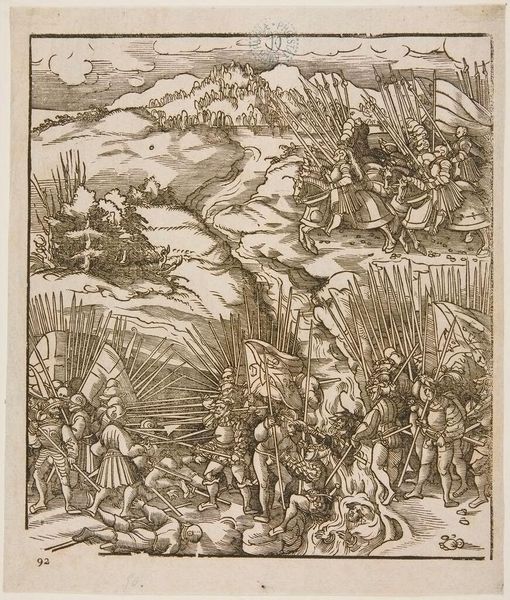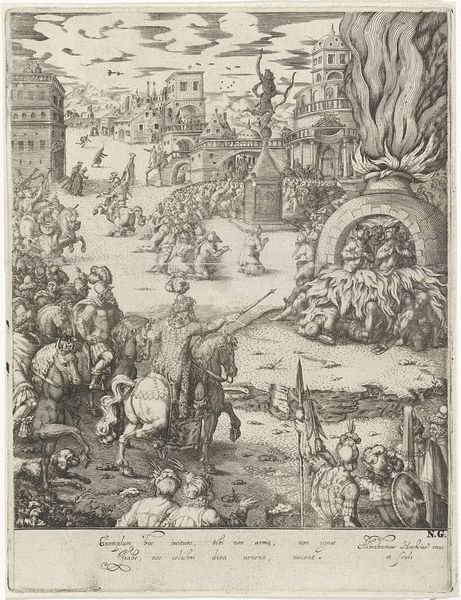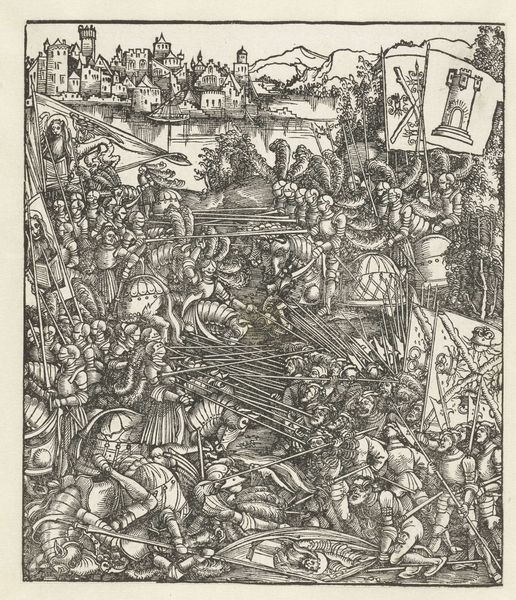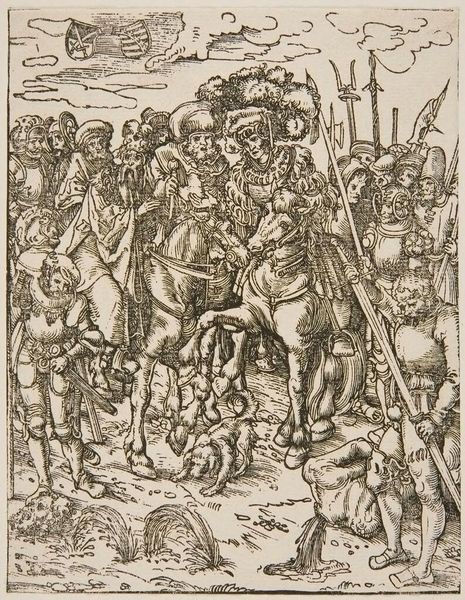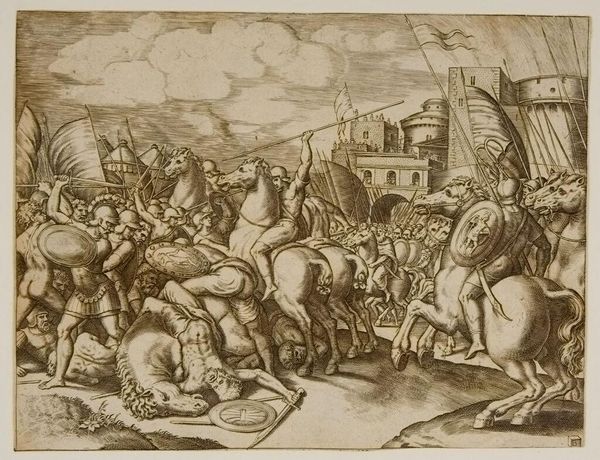
drawing, print, intaglio, ink, pen, engraving
#
drawing
#
ink drawing
#
narrative-art
# print
#
pen sketch
#
intaglio
#
mannerism
#
ink
#
pen work
#
pen
#
pencil work
#
history-painting
#
engraving
Dimensions: height 575 mm, width 390 mm
Copyright: Rijks Museum: Open Domain
Curator: Jacob Matham's "Calvarie" from 1615, currently residing at the Rijksmuseum, employs engraving on intaglio to capture a scene of immense historical weight. My first impression is the sheer density; every inch is filled with figures, creating an almost overwhelming sense of chaos. Editor: Overwhelming is right. You immediately feel the tension and brutality of the moment, a rawness that goes beyond mere religious depiction. The layers of people, their faces etched with suffering… it speaks to a shared human experience of grief and injustice. How does Matham achieve this feeling of intensity? Curator: The medium plays a crucial role. Intaglio allows for incredibly fine lines, producing textures and details that capture light and shadow effectively. Consider the physical act: the artist meticulously cutting into the metal plate, a slow and laborious process mirroring the torment depicted. Moreover, the prints would have been reproduced, multiplying access to this visual narrative. Who were the consumers of this imagery and where were these prints exchanged? Editor: Absolutely, the material context and accessibility matter. The piece embodies the artistic style of Mannerism and needs to be seen within broader political and social landscapes, in addition to the biblical narrative. It reflects the social and religious upheavals of the time— the struggle for power, the persecution of marginalized groups. You see that in the violence depicted here; it reflects a very real struggle. Curator: The perspective is so interesting as well; Matham positions us above the unfolding narrative, creating a godlike or governing vantage. How much did that perspective inform his creation process? It appears this position allows viewers, specifically early consumers, to be in line with established modes of governance and structures that were widely agreed on within 17th century European communities. Editor: I agree, yet to adopt a similar position now can also function as a moment to assess such historical displays of brutality and how they tie into present systems and struggles of injustice, not in alignment with those frameworks. Curator: Food for thought as we examine art as more than representation, right? Editor: Exactly, a point to always revisit, it changes everything.
Comments
No comments
Be the first to comment and join the conversation on the ultimate creative platform.
